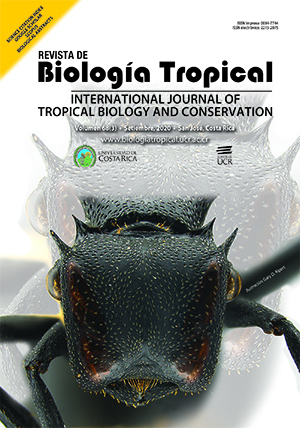Abstract
Introduction: The knowledge on the diversity of psocids in Colombia has increased, following the global trend, but the main interest of most of the studies has been oriented to solve taxonomic aspects, leaving aside other biological aspects, of which little is known, such as the ecological interactions of these organisms in tropical forests. Objective: To describe the psocid diversity in two Colombian Amazonian localities and provide the first data on their vertical distribution in tropical forests. Methods: Monthly samplings of Psocoptera were conducted during new moon periods, from July 2014 to May 2015. Surveys were carried out in two localities of the Putumayo department, Colombia (Puerto Asís and Mocoa), using LED light traps. Results: During the sampling period, 152 species, in 23 genera and nine families were collected. The richest family was Psocidae, followed by Epipsocidae and Lachesillidae. More than 80 % of the species found are still undescribed, and among the described ones, nine represent new records for Colombia, and are shared with neighboring countries in the Amazon basin. Fourteen (9.2 %) species are shared by the two localities surveyed. Puerto Asís is considerably richer than Mocoa. Vertical stratification of Psocoptera was found in both localities, with the canopy being the most species rich stratum. Conclusion: The relatively high diversity of psocidos found, as well as the high number of new species, is an indicator of the need to continue the exploration of these organisms in the rest of the Colombian territory and Andean countries, especially in the Amazon foothills. Stratification of the studied psocoptera community was evident, with the canopy stratum being the richest in species, a trend that continues throughout the year.
##plugins.facebook.comentarios##

This work is licensed under a Creative Commons Attribution 4.0 International License.
Copyright (c) 2020 Jeferson Danobis Panche-Chocué


